
Robert J. Jones
January 2, 2013 - September 23, 2016
Robert J. Jones’ tenure leading the University at Albany was marked by the largest academic expansion in 50 years. Under his leadership, the University established the College of Emergency Preparedness, Homeland Security and Cybersecurity, as well as the College of Engineering and Applied Sciences (now the College of Nanotechnology, Science, and Engineering). The University also began a health sciences initiative on what was then known as the East Campus. President Jones helped secure two of the largest philanthropic gifts in the University’s history, the Tom and Mary Casey Stadium and the Massry Center for Business. Following his tenure at UAlbany, Jones served as Chancellor at the University of Illinois at Urbana-Champaign.
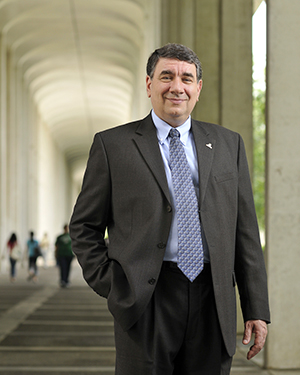
George M. Philip
October 3, 2007 - November 26, 2007 (Officer in Charge)
November 27, 2007 - June 16, 2009 (Interim President)
June 16, 2009 - December 30, 2012 (President)
George M. Philip, a two-time graduate of the University at Albany, had led the New York State Teachers’ Retirement System for many years prior to being named UAlbany’s Interim President and eventually President. During his tenure, the University completed a $300 million capital campaign and increased its endowment by 26 percent. The University also began construction of the business school building, which would eventually be known as the Massry School of Business. He also oversaw the opening of the Grand Entry Plaza following a $4 million renovation. Although he oversaw cuts to some programs, he also led significant growth in the College of Nanoscale Science and Engineering (now the College of Nanotechnology, Science, and Engineering). In 2010, President Barack Obama visited the College of Nanoscale Science and Engineering, holding it up as a model of economic impact and workforce development for the nation.

Kermit L. Hall
February 1, 2005 - August 13, 2006
Kermit L. Hall established the University’s Inaugural Student Scholarship Fund by refusing a formal inauguration and pledging the $100,000 that would have been spent on that event to the fund, as well as a $10,000 personal pledge. Hall promoted UAlbany’s development of nanotechnology and during his tenure UAlbany was named by then-Governor George Pataki to lead a new nanotechnology research consortium, the Institute for Nanoelectronics Discovery and Exploration. Other initiatives during President Hall’s tenure include establishing UAlbany’s Honors College and signing agreements for joint programs with universities in Peru and China. As an American constitutional, legal, and judicial scholar, Hall continued to publish and teach while at the University at Albany. He died in swimming accident at Hilton Head Island in 2006.
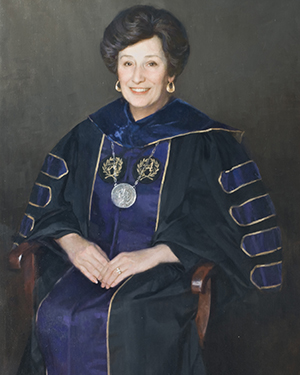
Karen Hitchcock
August 1, 1995 - April 24, 1996 (Acting)
April 24, 1996 - January 30, 2004
Karen Hitchcock was the first woman to hold the position of president at UAlbany and during her tenure made a significant impact on the University’s physical footprint, academic and research, and international reputation. She oversaw significant investment in the Uptown Campus, with the construction of several new buildings: the Science Library, the Life Sciences Research Building, Empire Commons, the Boor Sculpture Studio, the Cancer Research Center, the Arts & Sciences Building, and University Hall. President Hitchcock oversaw UAlbany’s move to Division I athletics. She also deepened the University’s relationships with industry, establishing the Business-Higher Education Roundtable to forge partnerships that would drive economic growth. She was a patron of the arts and was known for her stalwart support of organizations like Albany Pro Musica and the New York State Writers Institute.
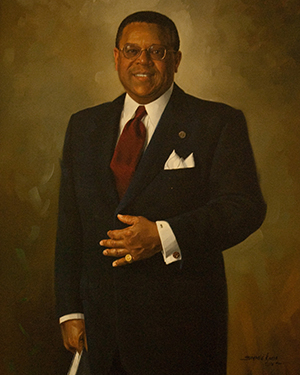
H. Patrick Swygert
August 1, 1990 - July 31, 1995
H. Patrick Swygert was the University at Albany’s first Black President. His tenure was marked by the reconstitution of the College of Arts & Sciences, which had been divided into three divisions since the 1970s, the re-establishment of multiple PhD programs in fields like English, History and Philosophy, and the creation of a French Studies Program. President Swygert launched the largest capital campaign to ever take place at a SUNY institution, the University's $55 million “Campaign for Albany.” He oversaw the expansion of the school including an addition to the Campus Center, secured approval for the 75,000 square foot Center for Environmental Studies and Technology Management (CESTM) and celebrated the opening of the Recreation and Convocation Center (RACC), now known as the Broadview Center. In 1994, Swygert won The Tree of Life Award from the Jewish National Fund and the Thurgood Marshal Award from Bridge Builders of the Capital District for his involvement in helping stimulate communication between Black and Jewish Communities. President Swygert left UAlbany to take the role of President at his alma mater, Howard University.

Vincent O’Leary
July 1977 - 1978 (Acting)
1978 - July 31, 1990 (President)
Under the leadership of President Vincent O’Leary, the University established new degree programs in fields like criminal justice, public affairs and public health. Eventually, these programs would become the Nelson A. Rockefeller College of Public Affairs and Policy and the School of Public Health (now a part of the College of Integrated Health Sciences), founded in partnership with the New York State health commissioner. During his tenure, the University greatly expanded its first international exchange efforts and significantly increased external research funding.
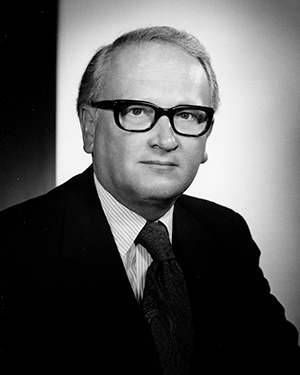
Emmett B. Fields
July 1, 1975 - July 1977
President Emmett B. Fields oversaw the creation of new departments and centers, including the Institute for Humanistic Studies, the Institute for the Environment, and the Center for Government Research and Services. Under his leadership, the Alumni House opened and the first Citizen Laureate honors were awarded by the University Foundation.
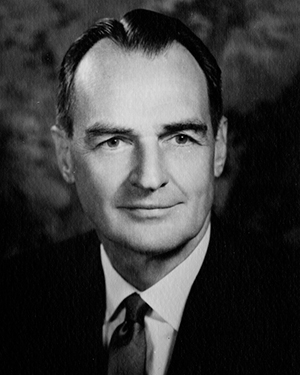
Louis T. Benezet
July 1, 1970 - June 30, 1975
Louis T. Benezet oversaw the establishment of Departments of Judaic Studies and Puerto Rico Studies (which later became Africana, Latin American, Caribbean, and Latinx Studies) at UAlbany, the creation of a chapter of Phi Beta Kappa, and the participation of UAlbany students in the first ever undergraduate exchange program with the Soviet Union. The first course in women’s studies at the University and then a minor in the field were introduced during Benezet’s presidency. The Atmospheric Sciences Research Center at UAlbany also opened its Whiteface Mountain Observatory Tower, which is still in use today.
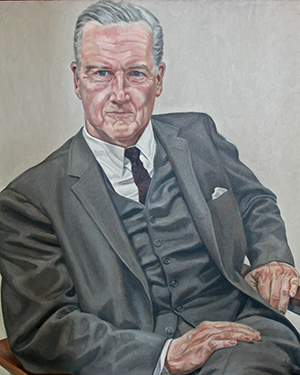
Evan R. Collins
July 1949 - June 30, 1969
Evan R. Collins oversaw a major transformation of the University, including significant construction projects, the name change from the New York State College for Teachers into the State University of New York at Albany, and the adoption of the Great Dane as the University’s mascot. During his tenure, the University expanded from its small Downtown Campus and built the large Uptown Campus beginning in 1962. The first classes were held on the Academic Podium of the Uptown Campus in 1966. The University also invested in the Downtown Campus, expanding dormitories at Alumni Quadrangle. The physical transformation was accompanied by a transformative expansion of the University’s enrollment and academic offerings. When he took office, the institution then known as the New York State College for Teachers enrolled about 1,500 students; when he left office two decades later, the University enrolled more than 10,000 students. He also oversaw an academic expansion that included the creation of the College of Arts & Sciences and Schools of Business, Criminal Justice, Library Science, Nursing, and Social Welfare, as well as the Atmospheric Sciences Research Center.
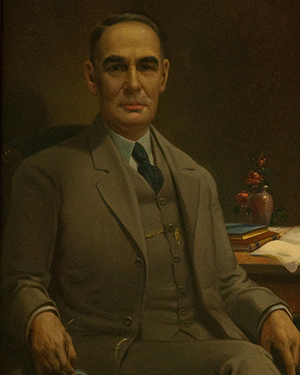
John M. Sayles
1939 - March 1, 1943 (Acting)
March 1, 1943 - March 10, 1947 (President)
John M. Sayles served as Acting President for more than three years before being officially recognized as President in 1943. Sayles’s term encompassed World War II during which more than 600 students, faculty, staff and alumni served and at least 19 were killed. A new dormitory, Sayles Hall, opened in 1941 and recognized Sayles’s leadership role, along with Dean Anna Pierce, in campaigning for and securing funds to build student housing. In 1944, the University celebrated its centennial.
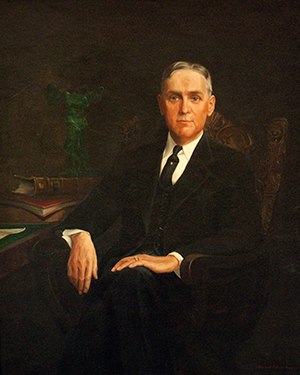
Abram Roy Brubacher
February 1, 1915 - August 23, 1939
Abram Roy Brubacher’s tenure was marked by World War I, in which over 100 students, alumni and faculty served and at least seven were killed. During his tenure, the University grew considerably with faculty more than doubling from 45 in 1915 to 105 in 1940, graduate programs growing and being added, and the footprint of the Downtown Campus expanding with the construction of Richardson, Page and Milne Halls. During his tenure, the University’s first on-campus women’s dormitory, Pierce Hall, opened in what is now known as Alumni Quad near the Downtown Campus. As President, Brubacher also raised admission standards and implemented faculty advisors and orientation for first-year students. The first Torch Lighting Ceremony was held in 1930 and the tradition continues to this day.
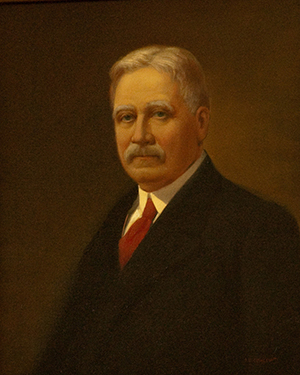
William J. Milne
October 29, 1889 - September 4, 1914
William J. Milne presided over the change in name from the New York State Normal School to the New York State Normal College. In 1906, Milne led the transition to a four-year liberal arts college devoted to training teachers. Ultimately, that change was reflected in another name change; the institution became the New York State College for Teachers in 1914 formally acknowledging the school's transformation to collegiate status. In 1906 a fire destroyed the school’s Willett Street home. Three years later, in 1909, the first three buildings of the Downtown Campus were opened, Hawley, Draper and Husted Halls.
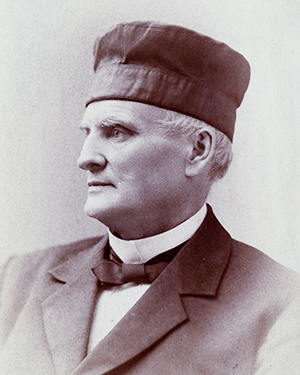
Edward P. Waterbury
June 22, 1882 - August 8, 1889
Edward P. Waterbury was the first graduate of the New York State Normal School to be named President. During his tenure, he oversaw construction of a new school building on Willett Street; the authorship of the first history of the school, A Historical Sketch of the State Normal School at Albany, NY and a History of its Graduates, 1844-1884; the leadership of the school’s first Alumni fundraising drive to fund the Alumni Memorial Window; and the introduction of a Kindergarten Department. During Waterbury’s tenure, Evelena Williams became the first known Black person to graduate from the Normal School.
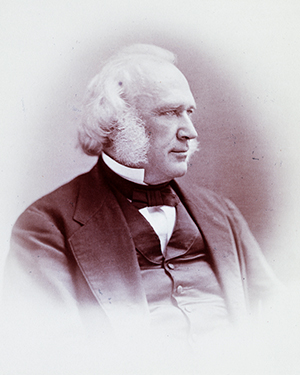
Joseph Alden
April 3, 1867 - May 23, 1882
Joseph Alden was the first leader of the institution to hold the title of President. During his tenure, more philosophy and government were added to the curriculum. Students received significant teaching experience at the Experimental School and the Primary School. During his tenure, the first international student graduated from the University, Sensaburo Kudzo of Japan in 1877.
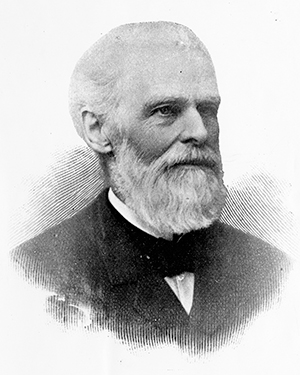
Oliver Arey
December 1864 - January 8, 1867
Oliver Arey's term as Principal was marked by an undocumented dispute with faculty, which resulted in multiple teacher resignations. During his tenure, the school had two notable graduates, Harriet E. Twoguns, the first Indigenous graduate, and Kate Stoneman, a prominent suffragist, who went on to become the first female lawyer in New York.
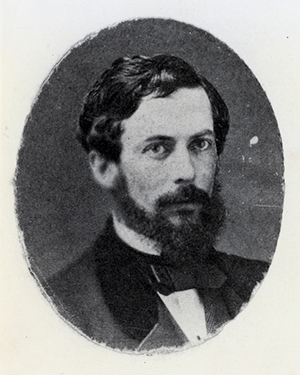
David Cochran
February 25, 1856 - December 8, 1864
David Cochran served as Principal of Fredonia Academy before being appointed Principal of the New York State Normal School. Cochran’s tenure was marked by the Civil War. The Normal School Company E was comprised of 100 faculty and students and engaged in 17 battles, including Gettysburg, under the leadership of Capt. Albert N. Husted, a mathematics professor and a member of the class of 1855.
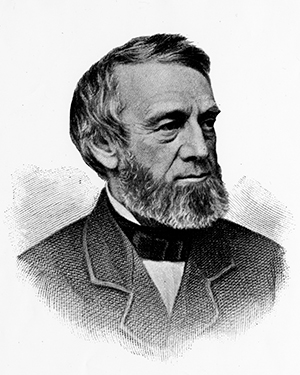
Samuel B. Woolworth
September 20, 1852 - February 1, 1856
Samuel B. Woolworth was the first college graduate to be appointed Principal. Woolworth resigned in 1856 to become Secretary to the Board of Regents. In that role, he introduced the Regents Exams. Later, Woolworth became the first person to lead the Normal School twice, serving as Acting Principal in 1867 following Oliver Arey’s resignation.
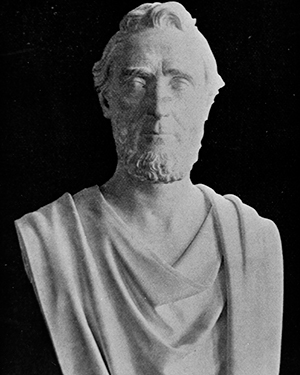
George R. Perkins
January 1, 1848 - July 8, 1852
George R. Perkins was the first faculty member hired to be appointed Principal. He had served as a mathematics instructor since the school’s first class. In 1849, the New York State Legislature decreed that every graduate of the New York State Normal School would be “deemed a qualified teacher.” In 1849, the institution moved to a permanent building at the corner of Lodge and Howard streets.
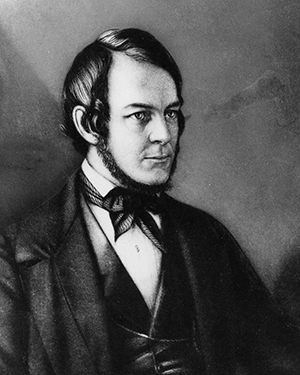
David Perkins Page
December 13, 1844 - January 1, 1848
David Perkins Page was appointed the first Principal of the newly founded New York State Normal School. The first classes to be hosted were held at the State Normal School’s temporary building, later known as the Van Vechten Hall, on State Street. The initial enrollment was 29 students taught by two faculty members, Page and George R. Perkins. Page had been a respected classroom teacher in Massachusetts before being appointed Principal of the Normal School. He continued to teach while serving as Principal and published a widely used textbook, Theory and Practice of Teaching, that included many of his lectures. By the spring of 1845, the Normal School enrolled nearly 200 students. In 1845, the Normal School opened the Experimental School, which served as a teaching laboratory until 1977.


